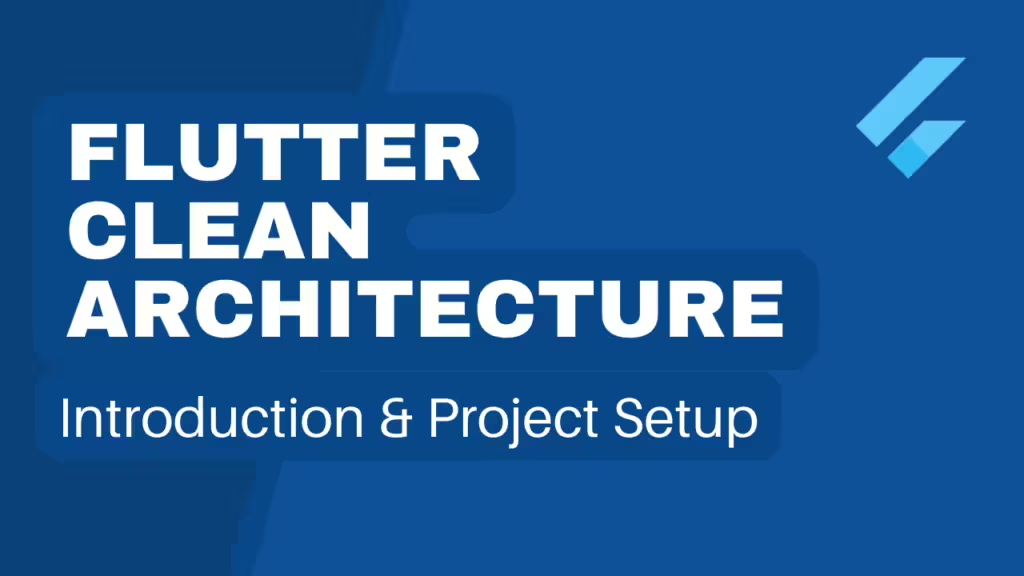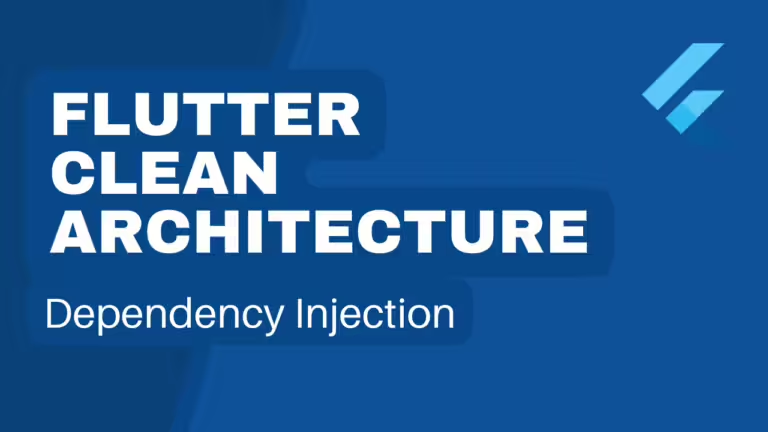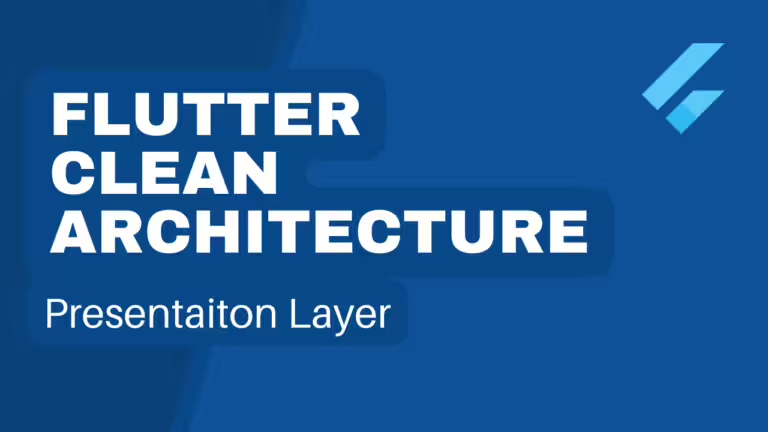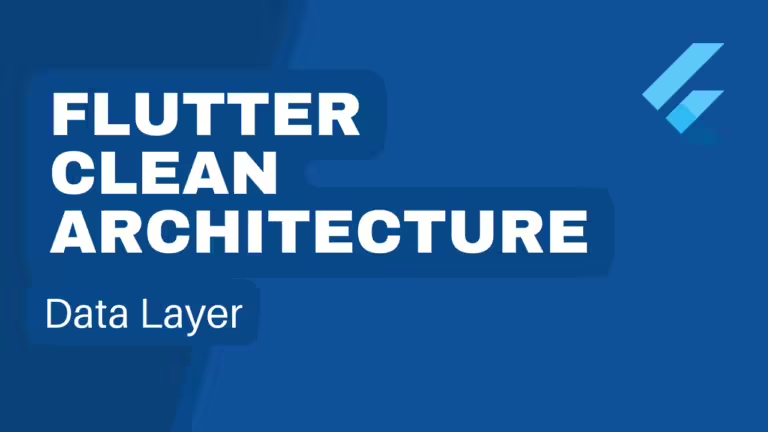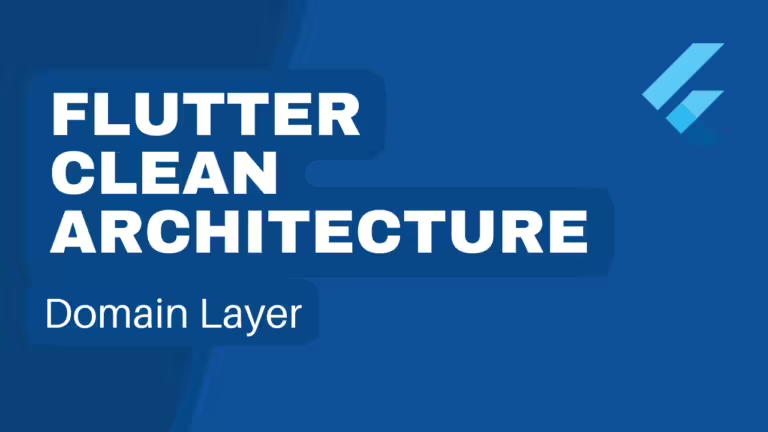Table of Contents
Layers of Clean Architecture
Typically Clean Architecture is divided into 3 layers:
Presentation Layer
The Presentation Layer is responsible for handling the UI and user interactions. In a Flutter application, this layer consists of Screen, State Management, Widget . The main components include:
- Screen: different Screens for this specific feature feature
- Widget: different Reusable Widgets for this specific feature
- State Management: State Management logic which also acts as mediator between UI layer and Domain layer for processing inputs and updating UI accordingly
Domain Layer
The Data Layer is responsible for data retrieval and storage. It interacts with external source (API and database) and internal storage. The primary components are:
- Repository: Implemented form of of repository for specific feature
- Source: Remote and Local data source for specific feature
- DTO: Data Transfer Object for specific feature
Data Layer
The Data Layer is responsible for data retrieval and storage. It interacts with external source (API and database) and internal storage. The primary components are:
- Repository: Implemented form of of repository for specific feature
- Source: Remote and Local data source for specific feature
- DTO: Data Transfer Object for specific feature
Setting up Flutter Project for Flutter Clean Architecture
You can find all of the implementations in the following GitHub link: Github Repository
Step 1: Create a New Flutter Project
flutter create flutter_clean_architecture
cd flutter_clean_architecture
Step 2: Organize the Project Structure
lib/
|-- feature/
| |-- feature1/
| |-- data/
| | |-- dto/
| | | |-- model_dto.dart
| | |-- repository/
| | | |-- feature_repository_impl.dart
| | |-- source/
| | | |-- feature_local_source.dart
| | | |-- feature_remote_source.dart
| |-- domain/
| | |-- entity/
| | | |-- entity.dart
| | |-- repository/
| | | |-- feature_repository.dart
| | |-- usecase/
| | | |-- action_1_usecase.dart
| | | |-- action_2_usecase.dart
| |-- presentation/
| | |-- bloc/
| | | |-- bloc1/
| | | | |--[BLOC_CONTENT]
| | | |-- bloc2/
| | | | |-- [BLOC_CONTENT]
| | |-- cubit/
| | | |-- cubit1/
| | | | |-- [CUBIT_CONTENT]
| | | |-- cubit2/
| | | | |-- [CUBIT_CONTENT]
| | |-- screen/
| | | |-- screen1/
| | | | |-- screen1_screen.dart
| | | |-- screen2/
| | | | |-- screen2_screen.dart
| | |-- widget/
| | | |-- specific_widget_folder/
| | | | |-- widget1.dart
| | | | |-- widget2.dart
| | | |-- widget3.dart
|-- main.dart
- feature: Features are placed in this folder making separate folder for separate feature. We use feature based folders.
- data: This folder has everything related to data layer.
- dto: DTOs for this feature. A Data Transfer Object (DTO) is a simple object used to transfer data between software application subsystems without any business logic.
- repository: Implementation of the repositories defined in the domain layer.
- source: Local and remote source. Local source handles data stored locally and remote source handles data stored in remotely.
- domain:
- entity: Entities for this feature. Entities are models used in this feature.
- repository: Contains abstract repository. Repository is An abstract class defining the methods that need to be implemented in the data layer.
- usecase: Contains the use cases, which are the actions of the application. Actions include delete, add, update etc.
- presentation:
- bloc / cubit: This folder contains state management logics. We are using bloc as statement tool. Any other state management tool can be used.
- screen: Defines the UI screens. Contains file for a screen. Each screen has their own folder.
- widget: Contains reusable UI components.
- data: This folder has everything related to data layer.
Step 3: Installing required dependencies & dev_dependencies
After starting new project install following as dependencies:
dependencies:
bloc: ^8.1.4
cupertino_icons: ^1.0.6
dio: ^5.4.3+1
equatable: ^2.0.5
flutter:
sdk: flutter
flutter_bloc: ^8.1.6
get_it: ^7.7.0
injectable: ^2.4.2
shared_preferences: ^2.2.3
Also add following as your dev_dependencies:
dev_dependencies:
build_runner: ^2.4.11
flutter_lints: ^3.0.0
flutter_test:
sdk: flutter
injectable_generator: ^2.6.1
Note: We are using latest version which may change in future.
In upcoming chapter we will deep dive into specific implementation. We will create a sample project and work alongside to get a better understanding of Flutter Clean Architecture.
You can find all of the implementations in the following GitHub link: Github Repository
Read more in upcoming chapters to learn more about all of the layers of Clean Architecture.
